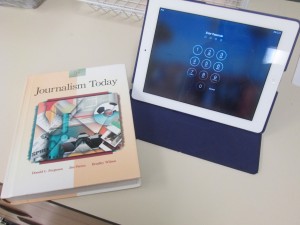In the next couple of years, Timber Creek is expected to make the switch from textbooks to iPads. Over six hundred school districts in the United States have made the switch to digital textbooks using devices such as the iPad, each loaded with electronic software and other online resources replacing traditional bulky textbooks.
Teachers in districts that have already made the change have shared their experiences and suggestions. Burlington High School in Boston, history chair Todd Whitten was interviewed by Here and Now reporter Robin Young.
While he had feared that students would spend all their time playing video games and texting friends, he found that if teachers were attentive, students could stay focused. He said if kids were too distracted by the iPads, he has them turned off.
Timber Creek principal Dr. Gabriel Berrio would welcome the shift: “I grew up with textbooks. They were always there, no need to charge them or worry about too much damage. But if I had to choose, I would go with the iPad because it has more features.”
The possibility of higher test scores makes the use of a tablet such as an iPad especially appealing. According to publisher Houghton Mifflin Harcourt, students who used an interactive, digital version of an Algebra 1 textbook for iPads in California’s in 2012 scored 20 percent higher than students who learned with print textbooks on standardized tests.
“I prefer the traditional textbooks over iPads. I think iPads would make my homework more complicated than it already is. Also, I could do without the added expense,” said senior Zaina Aljallad.
Berrio stated any tablet, such as a Nook or Kindle, could be used. “Student’s will be responsible for purchasing and taking care of their iPads. The school will supply the textbook software,” said Berrio.
So far, the pros seem to outweigh the cons.
